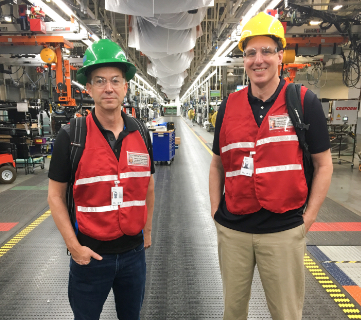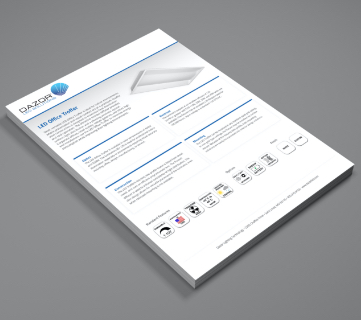3 Key Elements to Specifying LED Lighting
Here are some basic suggestions to follow when it comes to retrofitting your facility lighting. Prioritize the specifications most important to you.
1. LED Efficiency and Reliability
Wattage
Wattage is the measure of how much energy a light fixture requires. If you're trying to get the most energy savings, it’s important to know the wattage of the new LED fixture you’ll be installing compared to the legacy fixture currently installed.
Replacement Wattage
Replacement wattage indicates the wattage of the legacy fixture that is being replaced by the energy efficient LED fixture. If you're concerned about keeping consistent light levels, this will help in balancing energy savings with light output.
Rated Life
Rated life is how long an LED is intended to operate before reaching 70 percent of its original brightness. If you're concerned about how long the product lasts, this is an important spec. You can also pair this with warranty to get a more complete picture of reliability.
2. LED Light Output
Lumens
Lumens represent the measurement of how much light the light fixture emits. This is helpful in maintaining or increasing light levels; but remember that footcandles (or lux) may be even more important to know when requiring a certain quantity of light where work is being performed (usually around 3’ above a finished floor).
Efficacy
Efficacy is a ratio of how many lumens are produced per watt of energy consumed (lumens/watt). If you're looking for maximum energy savings over the lifetime of an LED fixture, the higher this number the more efficient the fixture is at converting electricity into light output.
3. Visual Appeal
Correlated Color Temperature (CCT)
CCT is a numerical value that indicates the color of light emitted from the fixture. In most industrial workplaces, the CCT will range from 4000K – 5000K depending on the particular area.
Color Rendering Index (CRI)
CRI measures a light source's ability to reflect colors accurately. A CRI above 80 is generally acceptable in an industrial setting. However for certain applications where a product’s color accuracy is critical, it may be desirable to have a 90+ CRI.
Dimmable
Many LED fixtures have drivers that allow the fixtures to dim. Compatibility with wall dimmers or other dimming techniques should be checked in advance during the lighting design and parts specification project phase.




